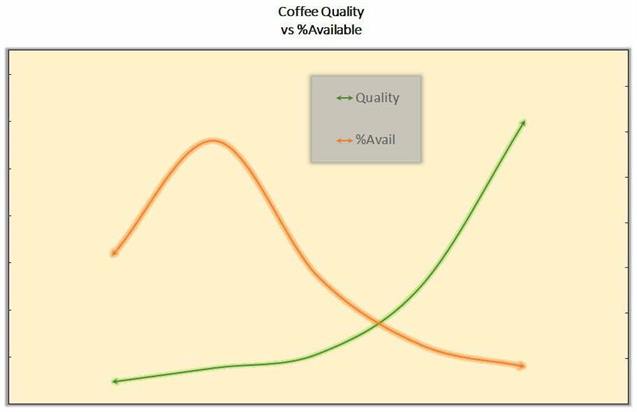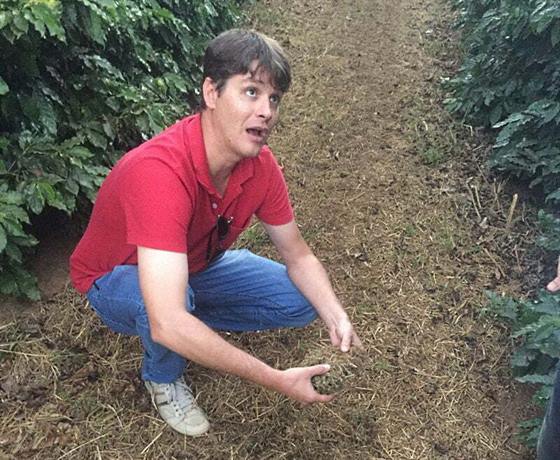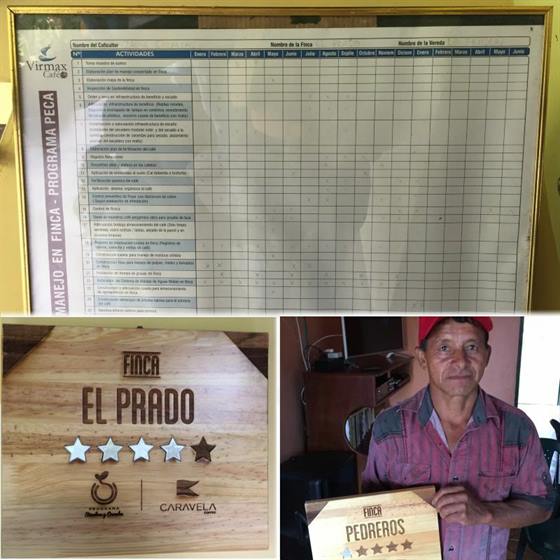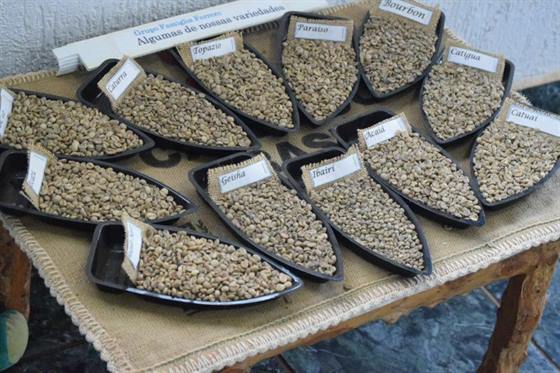For a product to reach the end-consumer, who is driven to enjoy a quality product, each step along the way needs to be one where quality is a priority.
Coffee, being an agricultural product that has many steps, requires a lot of care to ensure the final product is one of Quality. While we are no agronomists, the items below represent the fruits (lol) of our knowledge. Both hands-on (when visiting origins) and via research.
Firstly, how do we define Quality?
We define a coffee as a quality coffee when its complexity is easily identifiable for most people tasting the coffee.
Worldwide the industry has agreed that a coffee that scores 80 out of 100, using an industry standard cupping form and having at least 3 judges, is Specialty Grade. The scores from each judge need to be very close or the coffee is not considered to make the grade.
All coffees on our list that have a complexity rating of 4 have scored 83 or more, all coffees that score more than 87 we give them a 5-star rating. To score 90 or above makes the coffee very special – we have offered this in limited amounts but found that purchases of these coffees were low, and hence no longer really offer coffees at this level.
Worldwide coffees that score 83+ are rare. You can see this in the graph below which compares Quality to Availability:

Quality Farming – How is it achieved
Coffee, as we typically enjoy it, is the processed pip of a fruit that is roasted. For the fruit or cherry to produce a great pip many things need to be in place.
- The growing condition, especially the soil it will grow in, needs to be able to provide all the nutrients.
- Consideration of the variety of coffee is important.
- Tending to the plant as it grows and produces the fruit.
- Making sure only the ripe cherries are picked to guarantee quality.
Soil and growing conditions
When soil and growing conditions are just right the coffee that results is complex and sweet. While environmental conditions (average rainfall, altitude and surrounding crops) are dependent on the region the coffee is grown in the world, soil condition is a vital component. Specifically soil condition is the one part of the terroir that the farmer can manipulate or have some control over.
Investment in quality requires an investment in time and a solution to ensure the soil has the ability to produce high quality high yielding coffee plants. Recently there has been significantly more research done here, with specifics to soil dynamics, and this is creeping into the coffee world. In Brazil we saw a farm that has invested in crop diversity which then results in rich soils that hold water well and produce strong and productive plants, all organically certified.
We have visited the farm Belgravia (an experimental farm setup by Caravela) and saw the results of investing in working with the soil dynamics. Strong and productive plants that are producing both quality and quantity. Of all the coffee plantations we visited this was the most impressive.
Soil management takes time and planning, especially if quality is a driver. We saw many mass production farms that did not invest this time. The farms we went to that are driven to produce quality, take soil management very seriously. Some even installing environmental monitoring stations per square acre so that they can work at the micro level with the soils.
If you are interested in learning more, one of the shining lights in the coffee industry, Tim Wendelboe, has taken the next step and purchased a farm where he has learnt so much about soil. He presented his findings so far, at a CoLab. You can watch it here: CoLab Paris: Soil biology by Tim Wendelboe

In summary: you need a good climate and a good soil to produce great quality coffee. Good soil management is typically only a priority for those being properly rewarded for their produce. Well managed farms are able to achieve over 30% of their produce being quality (typically worldwide this average is closer to 5%). Good soil management makes for sustainable production.
Seedlings and Variety
In Ethiopia the natural environmental condition and heirloom varieties of Arabica have meant that they can rely on indigenous coffee plantations to provide a supply of coffee with little to no work. For the rest of the world selection of variety to growing environment and conditions determines the productivity and quality of the produce. With few exceptions (like Burundi where only bourbon is permitted to be grown) a producer needs to be careful when selecting the variety they grow. Often the choice is a trade-off between quantity of production and quality of production.
The largest example we have seen was on the farms we visited in Brazil. Some of the farms we visited had over 200 varieties.
The world coffee research organization has spent the last decade and a bit, identifying varieties. Which variety produces quality in what region, and with higher yields. They have published there first go at this study on their website: World Coffee Research: Varieties.
This is important research. For a farmer to invest in a variety it is a 2 – 3 year investment. The section of the farm where new variety is planted will not be productive. It takes 2 – 3 years until the coffee plant can produce its first crop. A recent example of the popularity of the Geisha variety being planted in areas where it was both unproductive and produced a low quality crop has cost some farmers their livelihood, while those that planted the right variety have reaped great financial rewards.
The investment in seedlings requires the farmer to either grow their own seedlings, work with someone that does or use government issued and sanction seedlings (like in Colombia when Castillo, was handed out in droves by the Colombian government).
In summary, selecting a variety of coffee is a quality versus quantity trade off. Farmers need to match their growing environment to their own commitment to quality or quantity. If quality produces more sustainable pricing and profits, then it becomes a driver. But this requires work and time investment on behalf of the farmer.
Tending to Coffee Plants
The amount of time invested in ensuring a plant produces a quality fruit is probably the single biggest investment a farmer needs to make. From the time the plant produces it first blossom until the plant is replaced when it is no longer producing coffee that is sustaining the farmer, there is a daily, weekly and monthly ritual of devotion to the plant.
Wherever we have gone, where quality is important we saw charts of things to do every week and every month. These charts were developed by the farmer, or with a partner who was helping them improve quality. When we visited farmers in Colombia with Caravela, farmers were recognised for the effort they had made to learn and apply these schedules (see pics of farmers with plaques).

In Brazil all the farms had these too, some went down to specific GPS points within the farm. Listing pests, fungus and diseases identified and how they were treated. These are then fed into daily, weekly and monthly sheets. Thereby listing actions necessary to be taken to ensure the plant stays strong and produces great coffee.
If the farmer is not following a schedule then prevention of pests, disease and fungus is neglected and this results in lower yields and quality. Although farms that are well managed can still be affected by all these items, it is the actions that are taken that reduce the effect on the plant.
![]()
Even though we saw many well managed farms, we saw some that are not. These farms produced few quality cherries and the yields were way down on acceptable levels.
A well-managed farm produces great coffee.
You can read more about the common diseases here: 3 common coffee damages
Summary
You need great growing conditions, climate and soil to grow the variety of coffee. Identified by the farmer to produce a quality product, without quantity affecting the sustainability of the farming. Then the plant needs to be nurtured to ensure it is strong and well enough to produce the quality product.
Sustainability balances quality vs quantity for a more profitable coffee cultivation.




